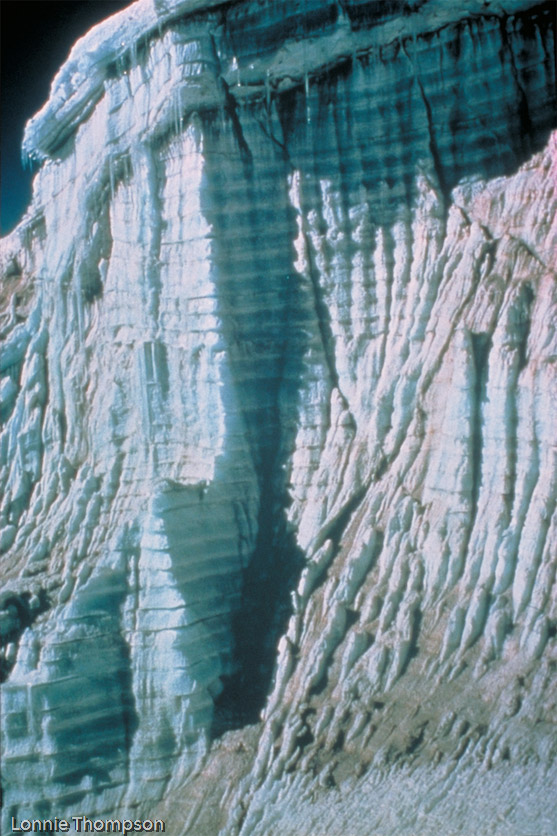Andean Glacier Bird - Diuca speculifera
Paleoclimate Research at Quelccaya
In 1977 the Quelccaya Ice Cap terminated abruptly and spectacularly in the 55 m ice cliff shown below. The annual accumulation layers clearly visible in the photograph are an average of 0.75 m thick. While snow can fall during any season on the Altiplano, most of it (80-90%) arrives between the months of November and April. The distinct seasonality of precipitation at Quelccaya results in the deposition of the dry season dust bands seen in the ice cliff. These layers are extremely useful to the paleoclimatologist because they allow ice core records to be dated very accurately using visual stratigraphy, which is simply the visual identification of annual dust layers in ice records (in most ice cores, annual layers become indistinct at depth, forcing paleoclimatologists to rely on less-accurate ice-flow models to establish chronologies; at Quelccaya, on the other hand, annual layers are visible throughout the core).
